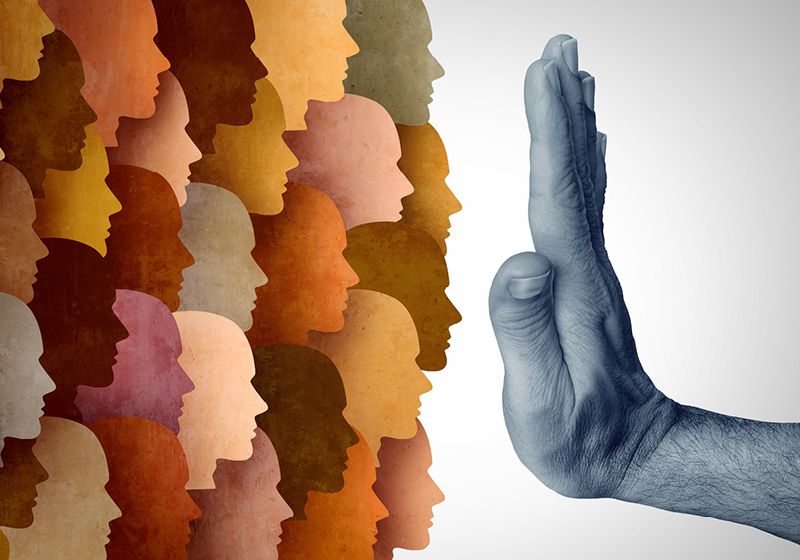Decreased international student enrollment across US universities may negatively impact local economies and scientific progress.
In May 2025, the Trump administration halted visa interviews and applications and in June issued restrictions against immigrants from 19 countries, including those on student visas. Part of the visa pause was to determine how to expand the review of applicants’ social media and online presence.
To assess the effects of these interruptions on enrollment and economic impacts, one group used data from the State Department, the International Institute of Education, and the Student and Exchange Visitor Information System. From this, the National Association of Foreign Student Affairs (NAFSA) estimated in July that 30–40 percent fewer international students may enroll in US universities for the Fall 2025 school year. They also projected this could lead to a decrease of $7 billion in US economic revenue and a loss of more than 60,000 jobs.
While these impacts will be felt across sectors, research and academia could experience losses in less tangible ways.
US Research Thrives on International Talent
“It makes me sad,” said Patrick Allard, a public health scientist at the University of California, Los Angeles, about the estimated decrease in enrollment. Having come to the US as an international postdoctoral researcher originally from France, he felt the projected loss of international students personally. However, as a group leader, he mourns the loss of diverse talent that such restrictions bring. “It’s going to make our environment less dynamic overall because it’s through the exchange of ideas that that we gain momentum or we maintain the competitiveness that we have,” he said.
Using information from national databases available in July, NAFSA projected how reduced international student enrollment may impact the US economy.
Erin Lemiuex, adapted from NAFSA: Association of International Educators and JB International.
From NAFSA’s report, California is anticipated to lose more than $1 billion in its economy. Allard said that he could not anticipate how the projected economic impacts may affect his lab. However, he added that the effects go beyond monetary value. “I’m thinking about all the undergrads. I’m thinking about all the grad students. I’m thinking about the postdocs who’ve come [from] around the world and trained in the lab and helped us produce research that is useful for the state of California, that’s useful for the US,” he said. “Ultimately we’ve seen our work being up taken by policy makers to decide on how to regulate chemicals and I think that’s invaluable in terms of the product.”
In NAFSA’s press release on this analysis, the organization outlined urgent policy changes to prevent an extreme loss of international student enrollment, including rescheduling interviews and exempting prospective student and scholars from the current travel bans. However, Allard said that, while these changes may help, they may not be sufficient to reverse the damage. “It’s not just whether these laws are passing. It’s the possibilities and the uncertainties around this all that does not make the US right now a welcoming place for these international students.”
Indeed, while many universities have not yet released official numbers, prospectives students cited more visa denials than in previous years, and some institutions saw declines in their numbers of graduate students at the end of August. In October, the Associated Press reported that federal data indicated a one fifth drop in international students in August. When asked about their international enrollment for the Fall term, a representative from the University of California, San Diego said that they would not have their final data until December or January.
Additional Visa Changes Threaten Academia’s Access to International Talent
Additionally, since NAFSA originally released these estimates, the administration announced additional changes to another international visa pathway, the H-1B. This visa supports companies and universities to fill roles needing highly skilled workers with international talent. Allard said that this visa is a cornerstone to citizenship for many people. In September, the executive administration increased the fee for new visas to $100,000 from the previous $215, though the fee doesn’t apply to existing applications.
“I’m glad it’s not affecting the renewal process, but it’s still sort of closing the tap at the source, especially for academia. We’re not going to be able to afford that $10,000,” Allard said. “It means that only the richest can afford it and then too bad for all the others. Then you will not be able to tap into this amazing pool of talent.”
Similar to the impact on research with the decrease in international student enrollment, Allard said that reducing the international workforce through changes to the H-1B visa will have negative consequences on science. “Whenever you build a team, you’re not just going to take any random collection of people just to fill in a number. You look at your team, and you look at what everyone can bring,” Allard said. “How competitive are you going to be when you’re not going to be able to really get the best talent or the most diverse talent who have trained in some of the best institutions around the world, including American ones, but also foreign ones?”

